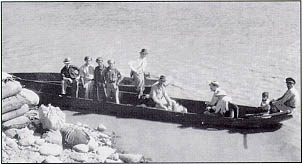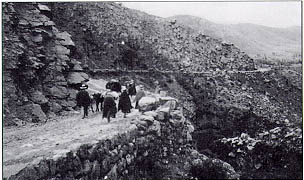August 19
| 1942 | PRA's Senior Structural Engineer, Harry P. Hart, and Associate Highway Engineer Edward A. Willis submit a report to Commissioner Thomas MacDonald on their work as part of the U.S. Economic Mission to Bolivia authorized by the Department of State on December 4, 1941. The report includes a general study of principal routes, recommends the Cochabamba-to-Santa Cruz route as the most important for improvement, and suggests the most practicable routes for inclusion in the "National Highway System." The transmittal letter notes that, "Roads exist along the majority of these routes, but since Bolivia is a country of rugged mountain regions and deep canyons, some of these roads are very steep."

| |
| 1959 | Region 9 crews working in Yellowstone National Park were all shook up, literally, by an earthquake that began at 11:37 p.m. on August 17. In inspecting the damage done by the quake, they found that the most critically affected BPR project is the reconstruction of the bridges on the Gibbon River. All new construction comes through with only minor damage, but all the roads in the western portion of the park, the hardest hit, are temporarily closed by rolling rocks and slope debris. |

